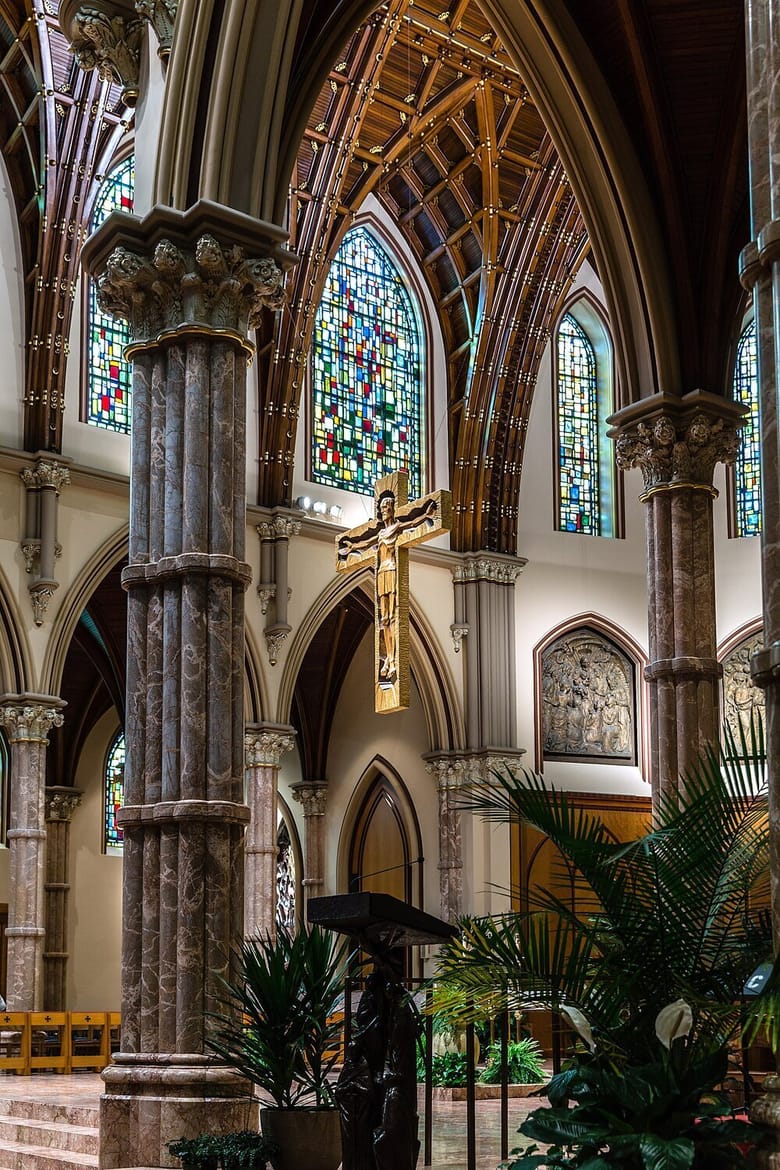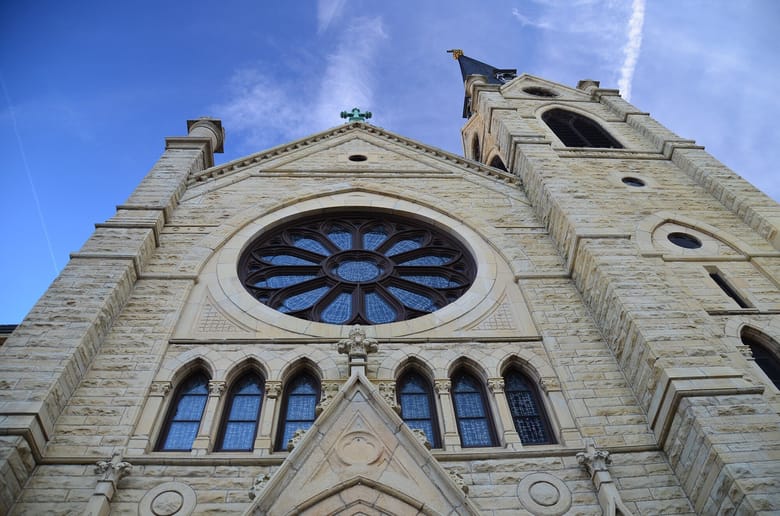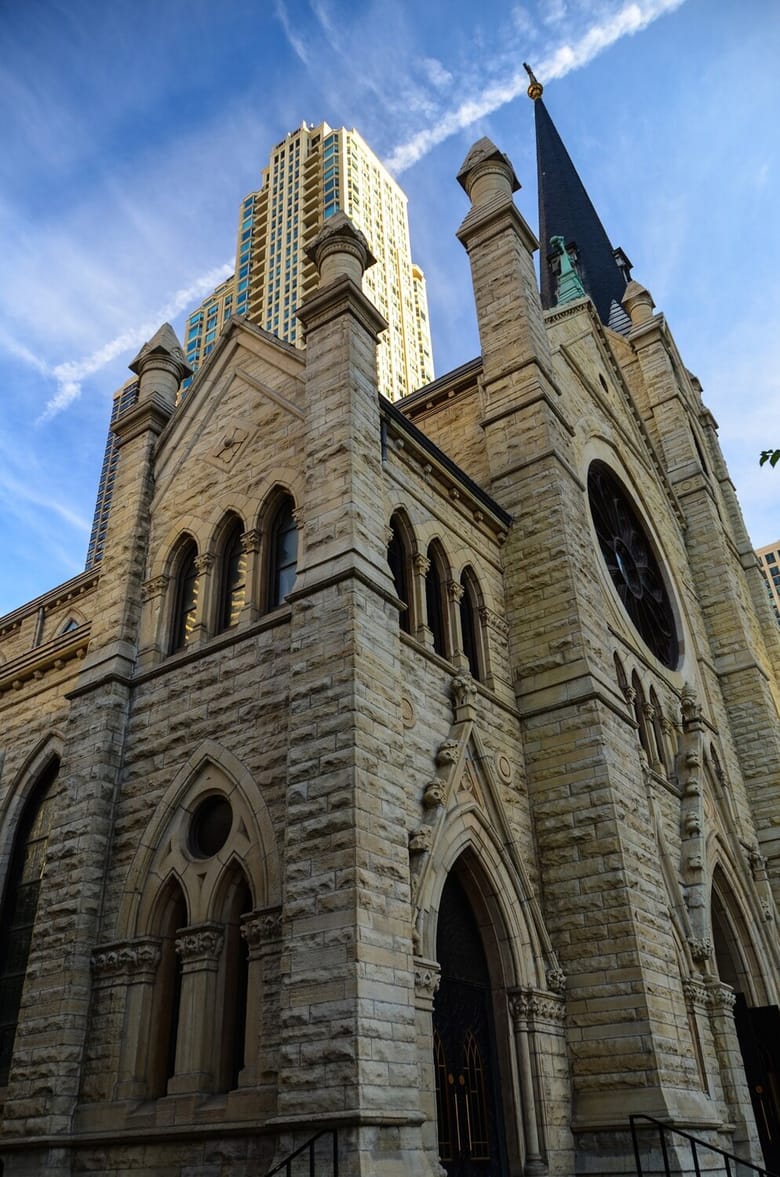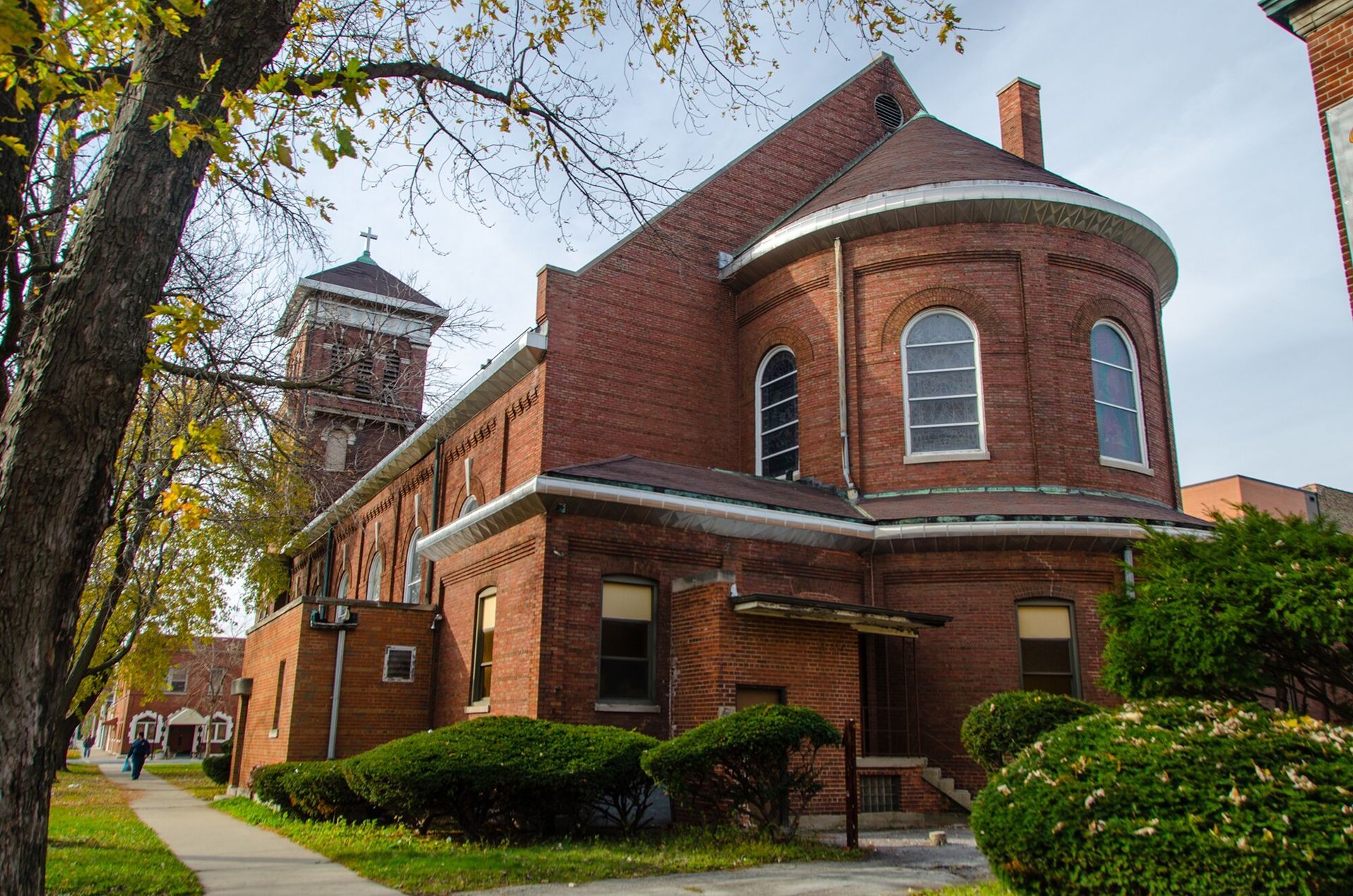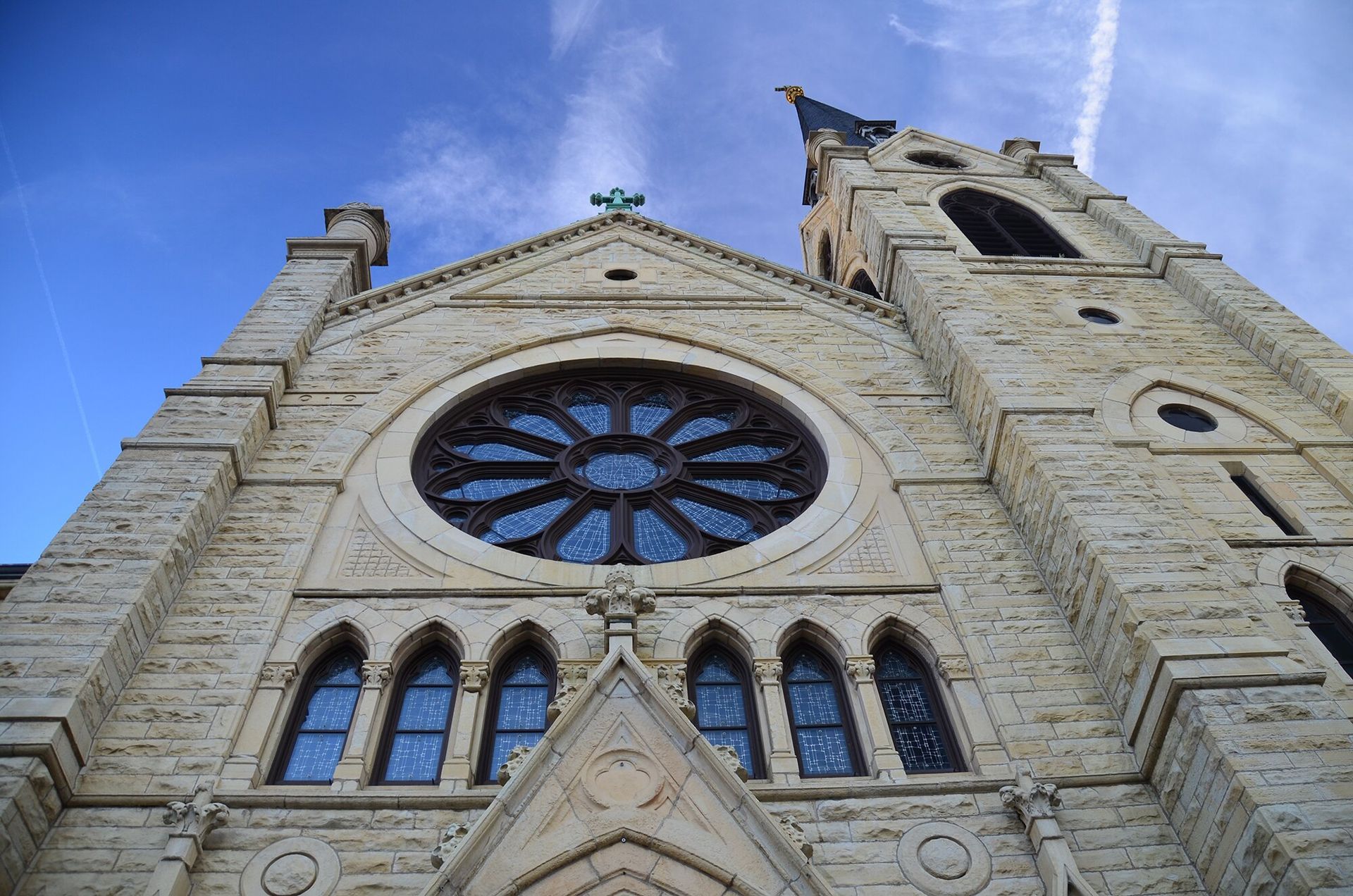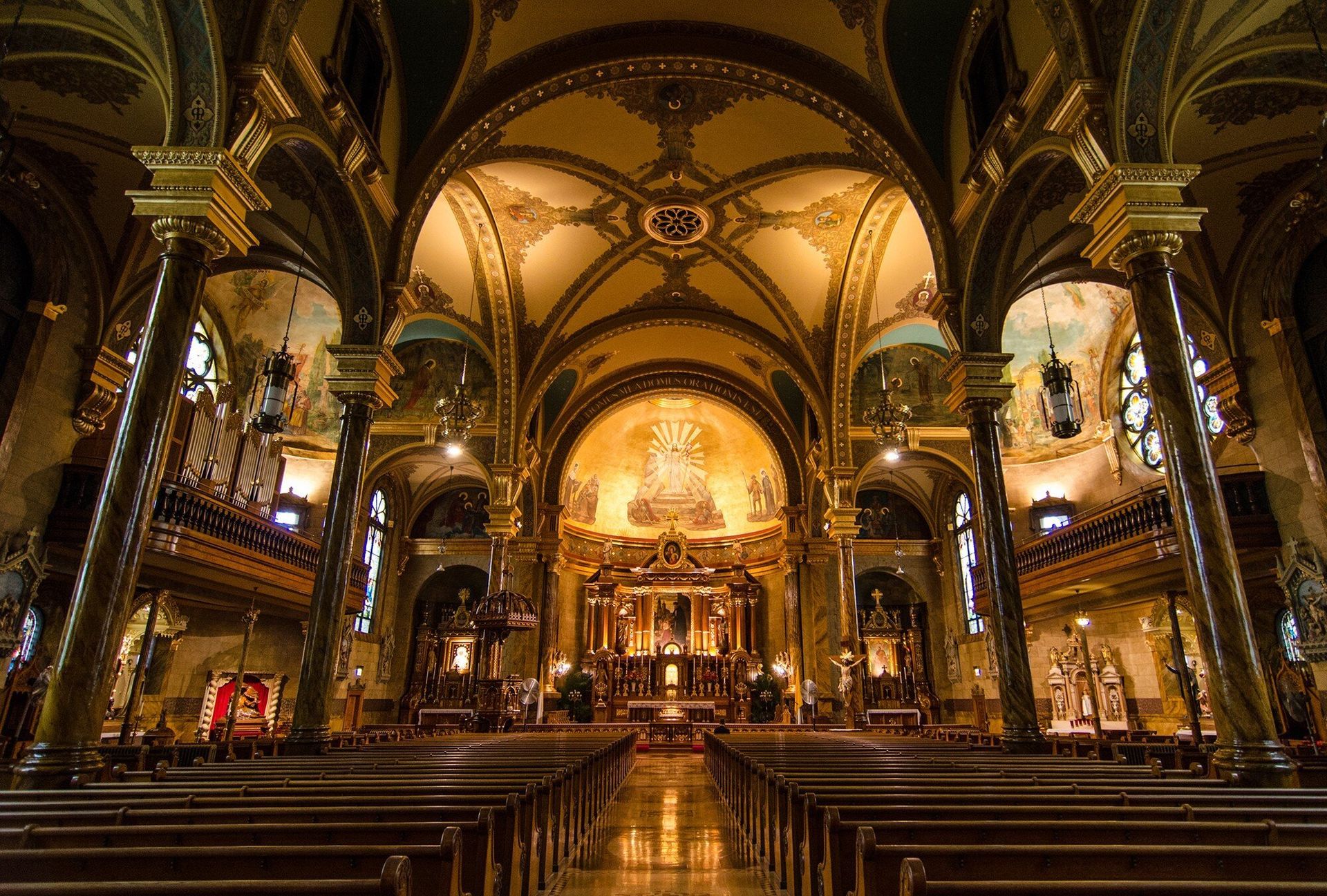Its towering Gothic Revival design, by a noted East Coast ecclesiastical architect, served as a template for many neighborhood parishes. It’s stood as an awe-inspiring island, despite nearly 150 years of constant change on Chicago’s Near North Side.
A MODEL FOR NEIGHBORHOOD PARISHES
Keely designed more than 600 churches, including every 19th-century Roman Catholic cathedral in New England. His design for Holy Name Cathedral draws on the great Gothic churches of Europe, with an asymmetrical plan and strong verticality. The tall tower, pinnacles and pointed arches all draw the eye up toward the heavens. The vertical emphasis continues in the interior, where bundle piers and dark wooden tracery evoke the Tree of Life. This Gothic Revival style established the primary architectural vocabulary for the majority of Chicago’s hundreds of parishes.
REBUILDING FOR THE AGES
Holy Name has grown and changed over the years since its dedication. Henry Schlacks moved the apse and added 15 feet to the nave in 1914. Later, repairs were made to foundational defects that caused part of the building to sag. Major ceiling repairs, an attic fire and the subsequent restoration kept the church closed for most of 2008 and 2009. Since reopening, the congregation has increased, reflecting the general prosperity of the Near North Side, and the continuing power of the church in one of America’s most Catholic cities.
OUT OF THE ASHES
Chicago’s first Catholic church was dedicated mere months after the city was formally established. The Catholic population grew exponentially from that day forward.
After the Great Chicago Fire destroyed both the Cathedral of St. Mary (Madison and Wabash streets) and the Church of the Holy Name (site of the present Cathedral), a new cathedral was needed. Finding few qualified architects in a young Chicago that was busy rebuilding, the commission went to Patrick Charles Keely in 1874. Keely was a prominent Irish-born, East Coast architect. After four years of worship in a burnt-out house, the new Holy Name Cathedral was dedicated in 1875.
Did you know?
The bronze and glass screen in the vestibule represents the Tree of Life and was designed by artist Albert J. Friscia.
Did you know?
The church ceiling is ornamented with 23,000 pieces of wood that were individually installed after a portion of the ceiling collapsed in 2008.
Did you know?
Above the sanctuary’s altar hangs the Resurrection Crucifix, sculpted by artist Ivo Demetz.
